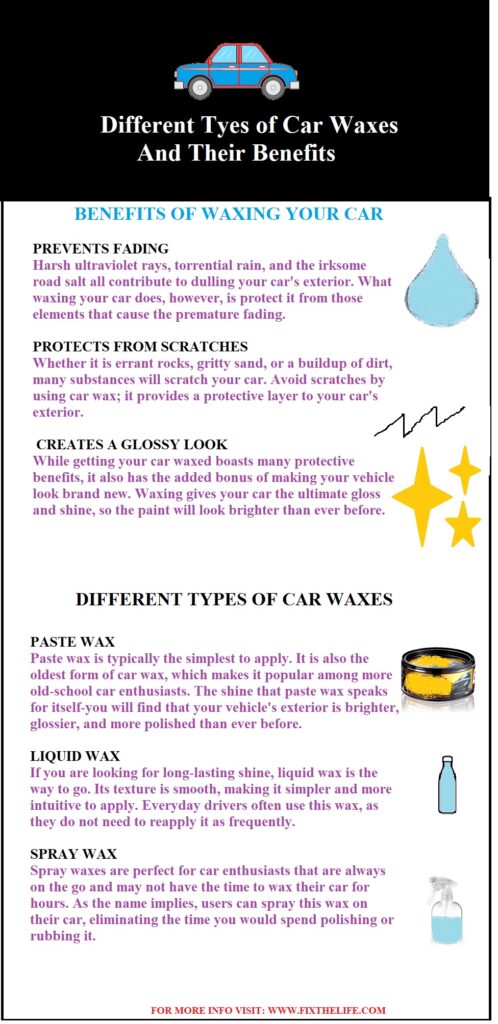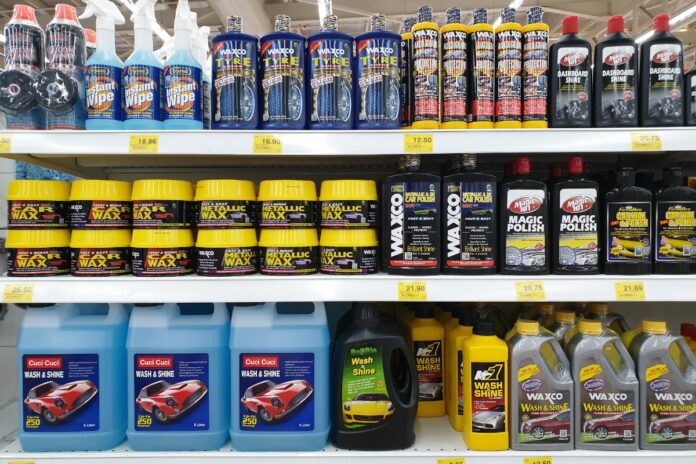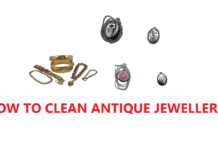Natural, Synthetic, liquid, solid, paste, different car wax types have many advantages and disadvantages. I remember the first time I waxed a car when I was seven years old. after removing bird poop off the car my mom asked me to wax the car, and I had no idea what I was doing. I had a step ladder, my older brother, and a can of wax from the grocery store. We did a terrible job, and it took a long time.
For a while, I thought waxing was a difficult and annoying task. But as I got older, I realized that waxing is a way to show love and care for your car.
There are many different types of wax to choose from; some are much better than what my mom got from the grocery store. That’s what we’re going to talk about today.
Types of Car Wax
Before getting into the types of wax, let’s know what it is waxing. Car wax is a product applied to a car’s exterior to protect and shine the paint.
It is typically made from natural or synthetic materials and is applied in liquid, paste, or spray. When applied to a car, the wax forms a thin, protective layer over the paint that helps to shield it from damage caused by the elements, such as sunlight, rain, and road debris.
It also helps to enhance the shine and overall appearance of the car’s paint.
Car wax can be applied by hand or a power waxer and is typically applied in thin layers to ensure even coverage. Wasting a car every few months is usually recommended to maintain its shine and protection.
Several different types of wax can be used on a car, each with unique properties and benefits. These include:
Synthetic Wax
Synthetic wax is made up of artificial materials, such as polymers and silicones, designed to imitate the properties of natural wax.
It can come in different forms, like sprays, pastes, or liquids, and is often developed to bond with the vehicle’s finish. Synthetic wax may not offer the same shine as a natural wax, but it tends to last longer.
It’s a good choice for those who don’t have the time to reapply wax frequently but still want their car to look good.
Natural Wax
Natural wax comes from natural sources, such as the carnauba palm tree or bees. It typically offers a very bright shine but only lasts for a short time as a synthetic wax. It’s a good choice for seldom-driven cars or car shows.
Cleaner Wax
Cleaner wax combines a polishing compound with wax to simplify the process. It’s designed to polish and remove fine particles of dirt that regular washing might miss, as well as apply a layer of protective finish.
Cleaner wax typically has a synthetic base and won’t have as long-lasting or brilliant shine as natural or synthetic wax, but it’s fast and convenient.
Hybrid Car Wax
Hybrid waxes are generally synthetic waxes with added ceramic coating elements. It’s not a replacement for a full ceramic coating, but it has elements of that in its chemical makeup.
Hybrid wax can have ingredients like silicon dioxide, titanium dioxide, or silicon carbide, which bond to paint in ways regular wax can’t. It offers the shine and protection of wax with the added durability of a ceramic coating.
Wash and Wax
Wash and wax products combine a car wash and wax in one formula. These products are designed to clean the surface of your car and leave a thin layer of wax for protection.
However, it’s important to note that the level of protection provided by wash and wax products is usually less than that of dedicated wax products.
If you want maximum protection for your car’s paint, it’s generally best to use a separate wash and wax product.
Each car wax type has unique characteristics and benefits, and the best choice will depend on your specific needs and preferences.

Why do Waxes Have Teflon, Ceramic, Graphene, or other Products?
Car wax is a protective coating applied to a car’s paint to provide a shiny finish and protect the paint from dirt, grime, and other contaminants.
Several types of car wax are available, including synthetic, natural, cleaner, and hybrid. Synthetic wax is made from artificial materials that bond with the vehicle’s finish.
It may not provide as brilliant a shine as a natural wax, but it tends to last longer.
Natural wax is made from natural sources such as carnauba wax and beeswax, and it typically provides a very bright shine but only lasts for a short time as a synthetic wax.
Cleaner wax combines a polishing compound with the wax to simplify the process and remove fine dirt particles.
Hybrid waxes are typically synthetic waxes with a ceramic coating, providing some of the benefits of a full paint sealant ceramic coating.
What Are The Forms of Car Wax
When choosing between synthetic and natural wax, it’s important to consider the form in which they come. Both types can be found in paste, liquid, or spray form, and each has its benefits and drawbacks regarding application and use.
For example, paste waxes may be more difficult to apply evenly but tend to offer longer-lasting protection. In contrast, liquid waxes are easier to apply but may provide less protection.
Spray waxes offer convenience and ease of use but may provide less shine or protection than other forms. Ultimately, your best form will depend on your preferences and needs.
Spray Wax
Spray wax is a simple and convenient way to apply a protective layer to your car’s paint. To use it, you should first ensure your car is completely dry.
Then, spray the wax in sections onto the car’s surface and wipe away any excess. Although it’s easy to use, spray wax typically offers less protection than other forms of wax and may not last as long.
Liquid Wax
Liquid wax is a type of car wax that is more difficult to apply than spray wax but provides more protection for the paint on your car.
It is generally made of synthetic materials and is applied in a liquid form, which can dry quickly, requiring you to work in smaller sections to ensure proper coverage.
Although liquid wax may require more effort to apply than spray wax, it is often more durable and provides a longer-lasting shine. Many car enthusiasts prefer using liquid wax for their cars because it provides strong protection and a high-quality finish.
Paste Wax
Paste wax is the traditional form of car wax that is most commonly thought of. It requires the application of the wax to the car’s surface, followed by buffing it off to achieve a shiny finish.
Paste wax is easy to control during application, but it can be the most time-consuming form to use due to the need for buffing. Natural waxes, such as carnauba wax, are often available in paste form.
Some Wax is Better Than no Wax.
Applying wax to your car is generally a good idea to protect the paint and keep it looking good. With wax, your car’s finish is more resistant to damage from elements such as salt, rust, and bird droppings. While there are different types of car wax to choose from, any type is better than none. To keep your car looking its best, regularly applying wax to the surface is important.




